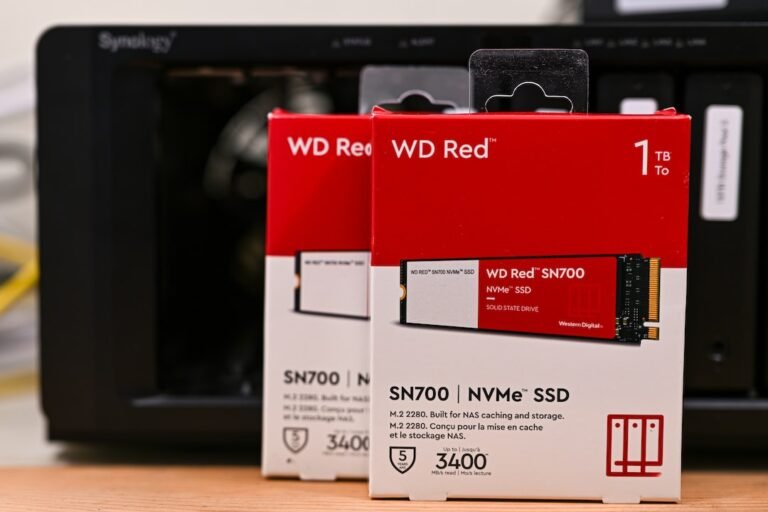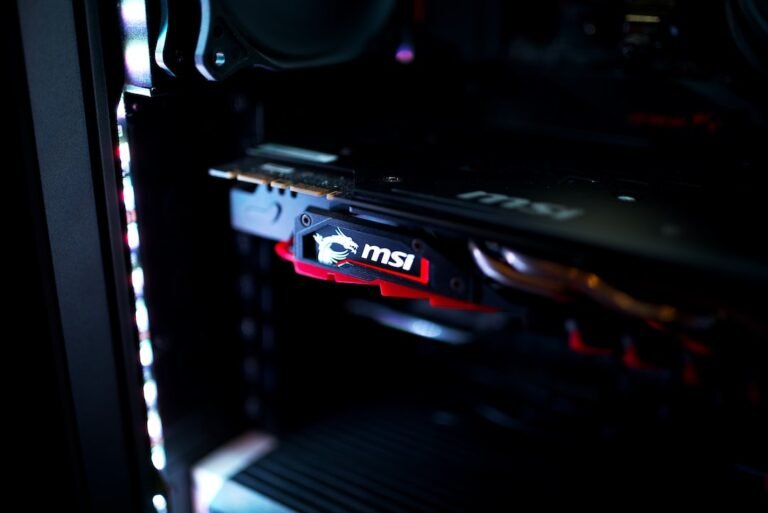Introduction
Have you ever wondered how your devices are connected to each other and to the internet within your home? The answer lies in your home network architecture. Whether you’re streaming movies, playing online games, or working from home, having a reliable and efficient home network is essential.
In this article, we will dive into the fascinating world of home network architecture and explore different connectivity needs. We’ll discuss the various types of network setups, their pros and cons, and how they can cater to your specific requirements. So, let’s get started!
Wired or Wireless: Choosing the Right Setup
When it comes to home network architecture, the first decision you need to make is whether to go with a wired or wireless setup. Both options offer their own advantages and disadvantages, so it’s important to understand your needs and preferences.
Wired Networks: Stability and Speed
If you prioritize stability and speed, a wired network may be the ideal choice for you. Wired networks use Ethernet cables to connect devices directly to the router, ensuring a reliable and consistent connection. This setup eliminates potential interference from other devices and provides gigabit-level speeds.
Ethernet cables come in different categories, such as Cat5e, Cat6, and Cat6a, each offering varying speeds and capabilities. Cat5e cables are the most commonly used and support speeds up to 1 Gbps, while Cat6 and Cat6a cables can handle speeds of up to 10 Gbps and 100 Gbps, respectively.
Setting up a wired network requires running cables throughout your home, which might be inconvenient if you prefer a clutter-free environment. However, if you have gaming consoles, desktop computers, or streaming devices that require a stable and fast connection, a wired network is well worth the effort.
Wireless Networks: Convenience and Flexibility
On the other hand, wireless networks provide the convenience and flexibility of connecting devices without the need for cables. They use Wi-Fi technology to transmit data between devices and the router. This setup allows you to connect laptops, smartphones, tablets, and other devices from anywhere within the network’s range.
Wi-Fi networks are categorized based on their generations, with each generation offering increased speeds and improved security features. The most common Wi-Fi standards include 802.11n, 802.11ac (also known as Wi-Fi 5), and 802.11ax (also known as Wi-Fi 6). Each new generation provides faster speeds and better performance.
Wireless networks are great for devices that don’t require a constant high-speed connection and need mobility, such as smartphones and tablets. However, they can be subject to interference from neighboring networks, obstacles like walls or furniture, and distance limitations. To overcome these challenges, you can strategically place Wi-Fi extenders or access points throughout your home.
Different Types of Network Topologies
Now that we’ve discussed the wired and wireless options, let’s explore the different network topologies commonly used in home network architecture. Network topologies refer to the physical or logical arrangement of devices and how they communicate with each other.
Star Topology: The Centralized Hub
The star topology is the most common network setup in homes. In this configuration, all devices are connected to a central hub or a switch. The hub acts as a central point of connection, allowing devices to communicate with each other and access the internet.
The star topology offers several benefits, including ease of installation, scalability, and simplified troubleshooting. If one device fails or encounters a problem, it won’t affect the rest of the devices on the network. Additionally, adding or removing devices is straightforward, as you only need to connect or disconnect them from the hub.
Bus Topology: The Straightforward Connection
The bus topology, also known as a linear topology, is a straightforward setup where devices are connected to a single cable, forming a line or a “bus.” This cable, known as the backbone or the trunk, carries data between devices.
While the bus topology is simple and cost-effective, it has some limitations. If the backbone cable fails, the entire network goes down. Additionally, adding or removing devices can disrupt the entire network, as each device relies on the same cable for communication.
Ring Topology: The Continuous Loop
In the ring topology, devices are connected in a circular loop, forming a closed circuit. Each device in the network is connected to two neighboring devices, and data travels in one direction around the ring.
The ring topology provides redundancy, as data can flow in either direction, ensuring that if one connection fails, the network remains intact. However, it can be challenging to troubleshoot and locate connectivity issues, as the entire network relies on the continuous loop. Adding or removing devices can also disrupt the flow of data.
Mesh Topology: The Strength in Redundancy
The mesh topology is a highly reliable and scalable network setup. In this configuration, every device is connected to every other device, creating multiple pathways for data to travel. This redundancy ensures that if one connection fails, data can still reach its destination through alternative paths.
Mesh networks are particularly useful for larger homes or areas with multiple floors. They provide excellent coverage and eliminate dead spots by allowing devices to connect to the nearest access point. While mesh networks offer outstanding performance, they can be more expensive due to the need for multiple devices.
Conclusion
As our reliance on the internet continues to grow, having a robust and efficient home network architecture is essential. Whether you choose a wired or wireless setup, understanding the different types of network topologies can help you design a network that caters to your specific connectivity needs.
Wired networks offer stability and speed, making them ideal for gaming consoles, desktop computers, and streaming devices. On the other hand, wireless networks provide convenience and flexibility, allowing you to connect devices from anywhere within range.
The star topology is the most common network setup, providing a centralized hub for communication. The bus topology is straightforward and cost-effective but lacks redundancy. The ring topology offers redundancy but can be challenging to troubleshoot. Lastly, the mesh topology provides excellent coverage and reliability but can be more expensive.
So, assess your needs, consider the pros and cons of each setup, and create a home network architecture that ensures a seamless and enjoyable online experience.
FAQ
Here are some frequently asked questions about home network architecture:
| Question | Answer |
|---|---|
| How do I set up a home network? | To set up a home network, you can follow these steps: 1. Decide on a wired or wireless setup. 2. Choose the appropriate network topology. 3. Select the necessary cables and devices. 4. Connect devices to the network hub or router. 5. Configure network settings and security options. |
| What are some common issues with home networks? | Common issues with home networks include slow internet speeds, intermittent connections, Wi-Fi dead spots, and network security vulnerabilities. To troubleshoot these issues, you can check for firmware updates, reposition your router, use Wi-Fi extenders, and implement strong security measures. For more information, check out our article on router troubleshooting. |
| What is the best home network setup for gaming? | For gaming, a wired network setup is generally recommended due to its stability and low latency. Connecting your gaming console or PC directly to the router using Ethernet cables can provide the best gaming experience with minimal lag. Additionally, prioritizing your gaming device’s traffic in your router’s settings can further optimize your gaming performance. |
| How can I secure my home network? | To secure your home network, you can take the following measures: 1. Set a strong and unique password for your router. 2. Enable network encryption, such as WPA2 or WPA3. 3. Regularly update your router’s firmware. 4. Enable a firewall and disable remote management. 5. Use a virtual private network (VPN) for added security when accessing your network remotely. For in-depth information, check out our article on wireless router security. |
Further Reading
For more information about home network architecture and related topics, check out the following resources:
| Website | Description |
|---|---|
| ZDNet – Home Network Setup | ZDNet offers a comprehensive guide to setting up a home network, including tips, tutorials, and troubleshooting advice. |
| PCMag – Gaming Router Buying Guide | PCMag provides an in-depth buying guide for gaming routers, helping you choose the best router for your gaming needs. |
| Mesh Wi-Fi Systems Explained | CNET explains the concept of mesh Wi-Fi systems and provides reviews and recommendations for the best mesh routers on the market. |
| 5G Routers for High-Speed Internet Connectivity | Tom’s Guide explores the world of 5G routers, discussing the benefits of high-speed internet connectivity and reviewing popular 5G router models. |
| Parental Control Routers: Protecting Your Kids Online | LifeWire offers valuable insights into parental control routers, providing recommendations on routers that help you protect your kids while they browse the internet. |
| Open Source Router Firmware: Customizing Your Network | How-to Geek delves into the world of open-source router firmware, explaining how it can improve network performance and security while allowing for customization. |
| VPN Router Security: Enhancing Online Privacy | VPN Geeks explores the importance of VPN router security, giving you tips and recommendations for setting up a secure VPN connection on your router. |
| Smart Home Integration: Connecting Devices Seamlessly | Smart Home Solver provides a comprehensive guide to smart home integration, discussing how to connect devices and automate your home using various protocols and hubs. |
| Fiber Internet Routers: Optimizing Your High-Speed Connection | Broadband Now covers the topic of fiber internet routers, offering insights on choosing the right router to get the most out of your high-speed fiber connection. |




